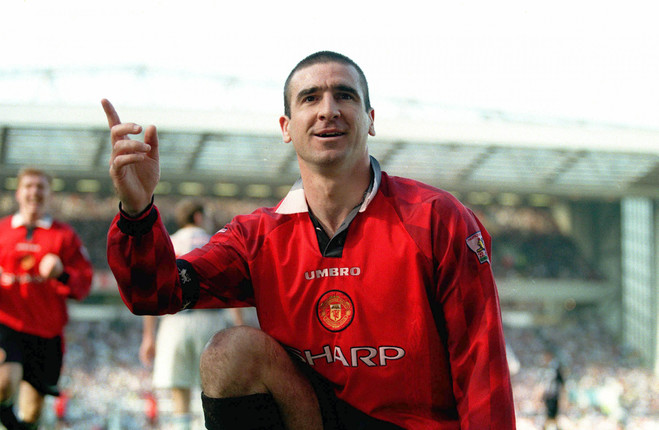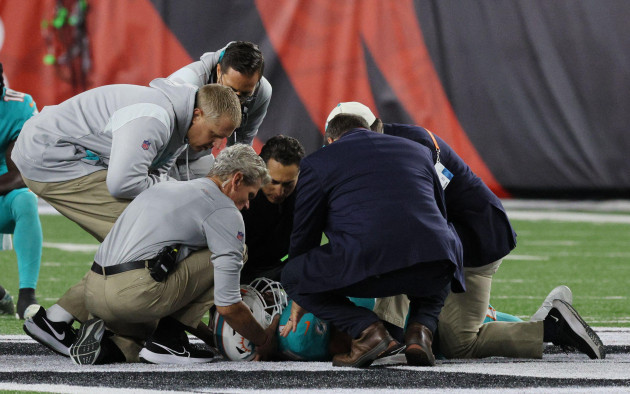1. Upon joining Manchester United, Cantona decided to live in a hotel. He says he liked the idea of one day being able to hand in a key card and, at the click of the fingers, walking away.
“Just before I left France, I said there was something wrong with me,” Cantona concedes. “I am a bit emotional. I thought, ‘Why doesn’t he look at it like this? Why doesn’t he say that?’. But I started to not care. Living in a hotel, it was a way of being in transit. I arrived in England as someone in transit and it gave me the freedom to express myself. If I had stayed in the same mentality as before, I don’t think I would have succeeded in England. Manchester United understood that very well because they said, ‘If Eric wants to leave, he can leave’.”
2. When did his drinking become a problem? Long before he abandoned his denials. It was blended into his working life. He accommodated everything: his duties, his binges. For years, he was a highly functioning alcoholic. In 2019 and 2020 he rode more horses than any other jockey in Britain; in both of those years, and in 2021, he was the champion jockey. In 2018, he finished runner-up. Somehow, he managed.
“The thing is, I never missed my engagements in the mornings because I was very good to get up – but I just wasn’t sober. I survived on so little sleep for so long a time because I would drink until I passed out, and obviously your sleep quality is so bad when you’re really drunk. I got away with it for a while because people put up with it. I was still getting on very well in the afternoons [at the races]. Did people spot it [his drinking]? Yeah, but what could they do really? I was riding winners every day.”
3. The particularities of Dublin soccer essentially lay in the socio-economic infrastructure of the city. Contrary to the English midlands, the Clyde estuary and Belfast, Dublin failed to develop as an industrial hub and remained essentially a city turned towards administration and commerce throughout the 19th century. Working conditions were also considerably worse than in Britain, with longer hours and lower wages.
It was only from the 1880s that this situation significantly improved and allowed a larger portion of the working class to budget for leisure activities. Basically, more men had more time in hand and more money to spend – and Saturday afternoon seemed a good way to do so.
4. The mass outrage stemming from Thursday night is rooted in the fact that Tagovailoa had his head twice violently slammed down four days apart. It’s a struggle to process how we can enjoy this sport without guilt, how a medical staff allowed this young man to take the field, how the league provides such little transparency on brain trauma to its players and fans. But the tough reality is had Tagovailoa not left the game on a stretcher, most of the NFL zeitgeist wouldn’t have given another thought to Tagovailoa’s brain and the possible impact of playing so soon after his “back” injury.
5. There has rarely been more goodwill after an Ireland defeat than Hampden, especially considering it wasn’t the first defeat of recent times. There is still a giddiness out there, that international football can be that entertaining, even while we’re involved in it. There have been evenings when the assembling crowd for an Ireland match has resembled a Lowry painting. Human beings, who think they are free, braced for tedium.
But 41,000 tickets accounted for, and upwards of 35,000 in the ground on a dull Tuesday night for a deadish rubber against minnows, off the back of a loss, was more than a crowd, it was a rally.
It was people still ready to go along for the ride. Prepared to see shades of grey. To grow agitated at the shots peppered into our own feet. But also to lose themselves in the delirium of an unlikely 11th-hour reward, however meagre.
Larry Ryan on positivity, Stephen Kenny and the work of LS Lowry, in The Irish Examiner.
6. Tall, athletic and uncompromising, Mullins was a midfielder made in heaven and the driving force behind Heffo’s Dubs in the 1970s and 1980s.
On Easter Saturday, 1974 he played in the pack for Leinster Rugby’s Under-19s against Ulster at Ravenhill.
The following day he made his debut for the Dublin senior team and things would never be the same again.
By the end of the season, he’d won his first Leinster title and helped Dublin to bridge a gap of 11 years since their last All-Ireland. He was still shy of his 20th birthday.
Mullins wasn’t just part of Dublin’s big bang moment. He was the big bang.
Buzz.ie’s David Coughlan on Dublin legend Brian Mullins, who passed away on Friday at 68.
7. Caldwell returned to Northern Ireland and spent the remaining money he had from his rugby career on alcohol and drugs. Everything he knew from childhood was geared towards the routines of rugby. Without it, he was lost. He had become institutionalised without realising it and had no coaching staff to give him a detailed plan of how he was going to run his life. Caldwell had entered an arena with an opponent he had no chance of defeating.
“There was a lot of cocaine. There were a lot of prescription tablets. The hip operations got me onto prescription drugs. So when you’re going through this in your mind, and you have the prescription medication, they take the pain away from your hip, but they also numb your whole body. That peace that they gave me, that’s what I was addicted to, not the actual substance. I was in such a dark place, I couldn’t see any light to get out. My only option was to try and numb it.”
The42 is on Instagram! Tap the button below on your phone to follow us!


